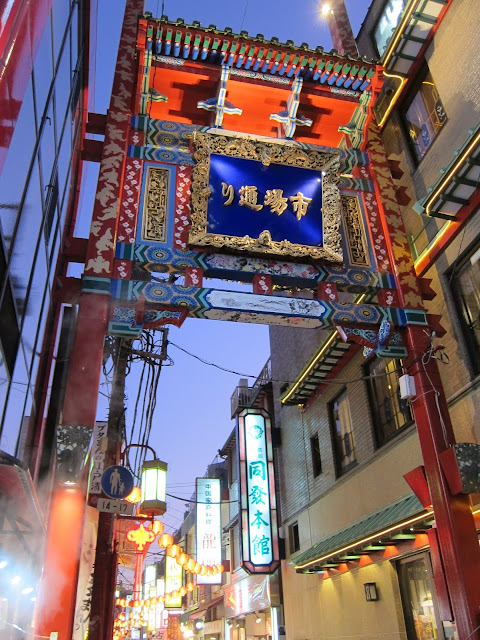I wasn't planning on going to Yokohama's Chinatown, also known as Yokohama Chukagai, 横浜中華街, but since it was right there, I did go. Because I took a lot of photos, I will try to keep the entries here from being too long. So the first Chinatown entry is about the most noticeable thing one sees when going to Yokohama's Chinatown. Which is the gates.
Since I was coming from the waterfront, the first gate I saw was 朝陽門, Choyo-mon.
Also known as the Sunrise Gate or East Gate. The blue color relates to this. Blue is the color that represents the dragon of the east, Seiryu. Which is another name given to the gate, 青龍門,Seiryu-mon.
All the gates are very impressive, in size, color and ornamentation.
While I didn't try to see all ten of the gates, I did see two more.
This red gate is 善隣門, Zenrin-mon.
It is known as the Good Neighbor Gate.
Built in 1955, it was to show the goodwill between Chinese and Japanese people.
It was the first gate built in Yokohama's Chinatown.
One more gate to show. This one is at an entrance to,市場通り, Ichiba-dori. Which means Market Street. It is a shopping street that originated in the 1920's
Just a peek at the colorful and busy Chinatown. More photos of it in my next post.


























































